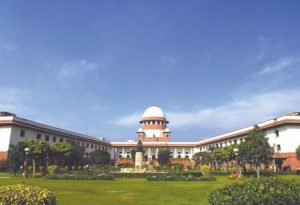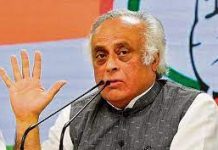 Suggestion by the Bar Council of India (BCI) on October 1, to the outgoing Chief Justice of India Dipak Misra not to accept any post-retirement job offered by the Central government has seemingly stoked the ongoing debate — ‘Should judges opt for post-retirement jobs or should they not’. While averring that acceptance of any assignment by a judge after his retirement leads to raising of fingers about the bona fides of this assignment, the BCI advice reiterates “some powerful people, sitting in the government, (which is the largest litigant), have been controlling our judges by giving them assurances to keep them engaged after their superannuation.”
Suggestion by the Bar Council of India (BCI) on October 1, to the outgoing Chief Justice of India Dipak Misra not to accept any post-retirement job offered by the Central government has seemingly stoked the ongoing debate — ‘Should judges opt for post-retirement jobs or should they not’. While averring that acceptance of any assignment by a judge after his retirement leads to raising of fingers about the bona fides of this assignment, the BCI advice reiterates “some powerful people, sitting in the government, (which is the largest litigant), have been controlling our judges by giving them assurances to keep them engaged after their superannuation.”
Prelude to this ongoing debate was provided by the appointment of former Chief Justice of India P. Sathasivam, as governor of Kerala in 2014 by the BJP-led NDA government. In early April this year, two senior Supreme Court Justices — Justice J Chelameswar and Justice Kurian Joseph — who were due to retire within the next few months., had categorically said that they would not be accepting post-retirement jobs. Although they are not the first ones to do so — former Chief Justices of India S H Kapadia, R M Lodha and T S Thakur have preceded them, to name a few. The refusal by such prominent Justices was enough to ignite the debate all over again.
Undoubtedly, the Constitution does not specifically bar judges from taking up any post-retirement assignment; nonetheless,some legal experts draw attention to suggestions that there should be a minimum cooling-off period between retirement and a new assignment to prevent conflict of interest. While agreeing that there is no bar against a former Judge taking up a job right after retirement, some legal experts point out that emerging trends raise significant questions that strike at the heart of the independence of the judiciary.
Executive-judiciary bonhomie
Media reports attest to the existence, to some extent, of bonhomie between the Executive and the Judiciary as far as offer of jobs to judges after retirement is concerned. Media reports, based on a study undertaken by the legal think-tank, Vidhi Centre for Legal Policy, make it discernible that as many as 70 of over 100 retired Supreme Court judges have taken up such assignments in organizations like the National Human Rights Commission, National Consumer Disputes Redressal Commission, Armed Forces Tribunal, Law Commission of India etc. Some have been appointed heads of commissions looking into the anti-Sikh riots or the Gujarat riots or as governors of states.
Of the several reasons attributed as to why retired apex court judges are to be appointed to these posts, generally by the Central and state governments, one of the reasons is the statutory requirement of these bodies. Media reports about think-tank’s study make it discernible that more than 30 judges were appointed within one year of their retirement, while about seven were appointed even before they retired. It can be noticed from findings of think-tank’s report that since 1950, there have been 44 Chief Justices of India who have accepted post-retirement jobs and in certain cases, Supreme Court judges have been appointed to commissions even four months ahead of retirement.
Bonhomie between the Executive and the Judiciary has haunted almost all dispensations of the past and present. Undoubtedly, Justice Sathasivam is the first Supreme Court Chief Justice to occupy the post of governor; nevertheless, the march from judiciary to executive began quite early. The appointment of Justice Fathima Beevi as Governor of Tamil Nadu in 1997 is said to be the first instance of a Supreme Court judge being made a governor. As per media reports, the then Bombay High Court Chief Justice M.C. Chagla resigned in 1959, to become the ambassador to the US. In 1968, the then sitting Chief Justice of India Subba Rao resigned to contest the election to the office of the President but lost. In 1970, retired Chief Justice of India M. Hidayatullah contested for the office of Vice-President and won. In 1973, Justice K.S. Hegde resigned as a judge of the Supreme Court, got elected as a member of the Lok Sabha and became its Speaker in 1977. In 1988, former Chief Justice of India Ranganath Mishra was appointed a Rajya Sabha MP by the Congress.
Media reports indicate efforts undertaken to neutralize the possibility of post-retirement ambitions influencing judicial pronouncement of judges at the cusp of retirement. Reports point out that the former Chief Justice of India R M Lodha, during his tenure, suggested a radical proposal to insulate soon-to-retire judges from the lure of coveted post-retirement jobs byrequesting the UPA government to envisage a system under which three months before they actually retired, Supreme Court and high court judges would be given the option to either get full salary (minus other benefits) for 10 more years after their retirement or get pension as fixed under the law. It was further stipulated that only those who opted for full salary would be empaneled for selection for posts that require retired Supreme Court or high court judges. However, such judges who opted for full salary would not be allowed to take up any private work, including arbitration.
Modi govt’s stance
The BJP-led NDA government headed by prime minister Narendra Modi is said to have appointed at least 12 retired judges on various government posts after coming to power in 2014. The appointment of former Chief Justice of India P. Sathasivam as the Governor of Kerala in the last quarter of 2014 by the Modi government triggered a debate in legal and political circles. Media reports reveal as to how Opposition parties were quick to insinuate that it was a quid pro quo and a reward for the relief Justice Sathasivam gave to BJP president Amit Shah in a fake encounter case. On his part, the former chief Justice denied this charge.
Ironically, in 2012, senior BJP leaders Arun Jaitley and Nitin Gadkari, had argued that the trend of recruiting retired judges was affecting the court’s judgments. As per media reports, in 2012, Jaitley had advocated for a cooling off period for Judges, saying that “pre-retirement judgments are influenced by a desire for a post-retirement job”. Jaitley was backed by his party president Gadkari.
The ruling NDA’s U-turn from its previous stance has been exemplified by the appointment of former CJI as governor of Kerala in late 2014 and some recent such instances. On July 6this year, Justice A.K Goel was appointed as the Chairman of National Green Tribunal (NGT) on the same day of his retirement as Supreme Court judge. Justice R.K Agrawal was appointed as the Chairman of the National Consumer Redressal Commission (NCDRC) during last week of May, within a few weeks after his retirement from Supreme Court. Some legal experts opine that these appointments, which occurred within a short span of the retirements of the said judges, have generated doubts by suggesting that decisions regarding their post-retirement assignments were already taken, at least in principle, by the Central government even during the tenure of the judges.
Way Forward
Many experts subscribe to the view that Judges accepting jobs under the Executive after retirement certainly creates situations of conflicts of interest, especially by undermining public faith in judicial independence. While asserting that Judiciary and Executive should remain mutual watchdogs than mutual admirers, some critics nurse the apprehension that post-retirement offers can lead to erosion of judicial independence. In the United States, no Supreme Court judge retires lifelong and this has been facilitated to prevent conflict of interest. On the other hand, in the United Kingdom, Supreme Court judges retire at the age of 70 and there is no legal bar to stop judges from taking post-retirement job, however, interestingly no judge has taken such a post.
Some experts opine that the Parliament is the appropriate place to introduce the “cooling-off period” by amending the Constitution by incorporating a provision similar to Articles 148 or 319 or alternatively, the existing laws which permit appointment of retired Supreme Court or High Court judges should be amended accordingly.
letters@tehelka.com












